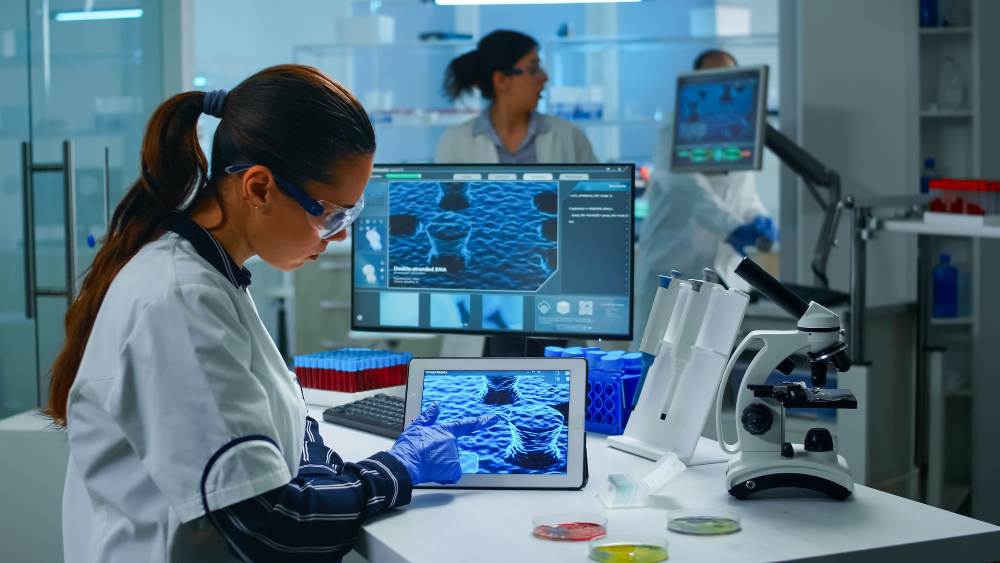Technology has transformed the ways we approach vaccines, particularly for the flu. One noteworthy development is the precision in matching flu vaccines to the strains actively circulating in a given flu season. According to Medical News Today, if the flu vaccine is matched to circulating viruses, it can reduce flu risk by 40-60%.
Innovations such as advanced gene sequencing allow researchers to predict viral mutations with greater accuracy. This capability ensures that vaccines are updated and remain effective, minimizing the impact of seasonal flu outbreaks. With tech in the picture, health organizations can better prepare for, and potentially prevent, widespread flu epidemics.
The continuous development of digital health records aids in tracking vaccination status and effectiveness. This real-time data exchange enables timely updates to vaccine recommendations. Consequently, health professionals can deliver targeted vaccination campaigns, ultimately maximizing public health outcomes.
Addressing Periodontal Disease with Modern Solutions
Periodontal disease, affecting a significant percentage of adults in the US, highlights another domain where tech proves vital. According to Forbes, around 42% of adults in the United States have periodontal (gum) disease. Fortunately, technology is revolutionizing detection and treatment methodologies for oral health issues.
Digital imaging and AI-driven diagnostic tools provide early detection of periodontal problems, which can significantly improve treatment outcomes. These technological tools deliver precise and reliable dental assessments, allowing for timely interventions. By catching gum disease early, dental professionals can forestall its progression and associated complications.
Moreover, technology facilitates personalized dental care through the development of digital treatment plans. Advanced software allows for simulations of treatment outcomes, enabling patients to make informed decisions. This personalized approach is critical in managing chronic conditions like periodontal disease and improving overall oral health.
Technological Advancements in Kidney Disease Management
Kidney disease poses a significant health challenge, especially when it progresses to severe stages where intervention is necessary. According to niddk.nih.gov, if kidney disease reaches the point where a person has less than 15% kidney function, dialysis or a kidney transplant is necessary. Technology is instrumental in both the treatment and management of kidney disease.
Dialysis machines, central to the treatment of end-stage kidney disease, have become more sophisticated due to advancements in medical tech. These machines now offer more efficient blood-cleansing processes while enhancing patient comfort and safety. As a result, those with diminished kidney function can maintain a better quality of life.
Additionally, tech has also pioneered innovative transplant techniques, improving the success rates of kidney transplants. With the aid of robotic surgery and enhanced imaging, the precision of such medical procedures has increased. This has led to improved recovery times and outcomes for patients undergoing kidney transplants.
Tech’s Influence on Diagnostic Innovations
Diagnostic processes have experienced a technological revolution, significantly aiding the early detection of diseases. The incorporation of AI and machine learning into diagnostic procedures allows for the rapid analysis of vast datasets. This speeds up the identification of diseases, providing critical lead time for treatment options.
Wearable tech devices have further expanded the capacity to monitor health indicators continuously. These devices collect real-time data on vital signs, aiding in the early detection of anomalies that could indicate disease onset. This constant monitoring helps in proactively managing health risks and reducing the burden of emergent illnesses.
Another notable contribution is telemedicine, which leverages digital communication technologies to offer remote diagnostics and consultations. This ensures that individuals in remote or underserved areas can access essential medical advice without the need to travel extensively. Consequently, technology not only aids in the early diagnosis but also democratizes access to healthcare services.
Technology in Enhancing Public Health Strategies
Tech’s role in crafting public health strategies cannot be overstated, given its capacity to process and analyze health data. Predictive analytics, powered by advanced algorithms, allows health organizations to anticipate disease outbreaks and allocate resources effectively. These predictions support timely intervention efforts, crucial for disease containment.
Moreover, digital platforms offer a channel for widespread health education and awareness campaigns, informing communities about preventive measures. These campaigns utilize social media and other online tools to reach vast audiences efficiently, disseminating crucial public health information. The infusion of tech into these strategies ensures that communities remain informed and prepared.
Furthermore, real-time surveillance systems, enabled by tech, assist in tracking health trends and evaluating the impact of interventions. This ongoing monitoring helps public health officials to adapt and fine-tune strategies, ensuring optimized responses to evolving health challenges. Harnessing the power of technology allows for more resilient and responsive public health frameworks




